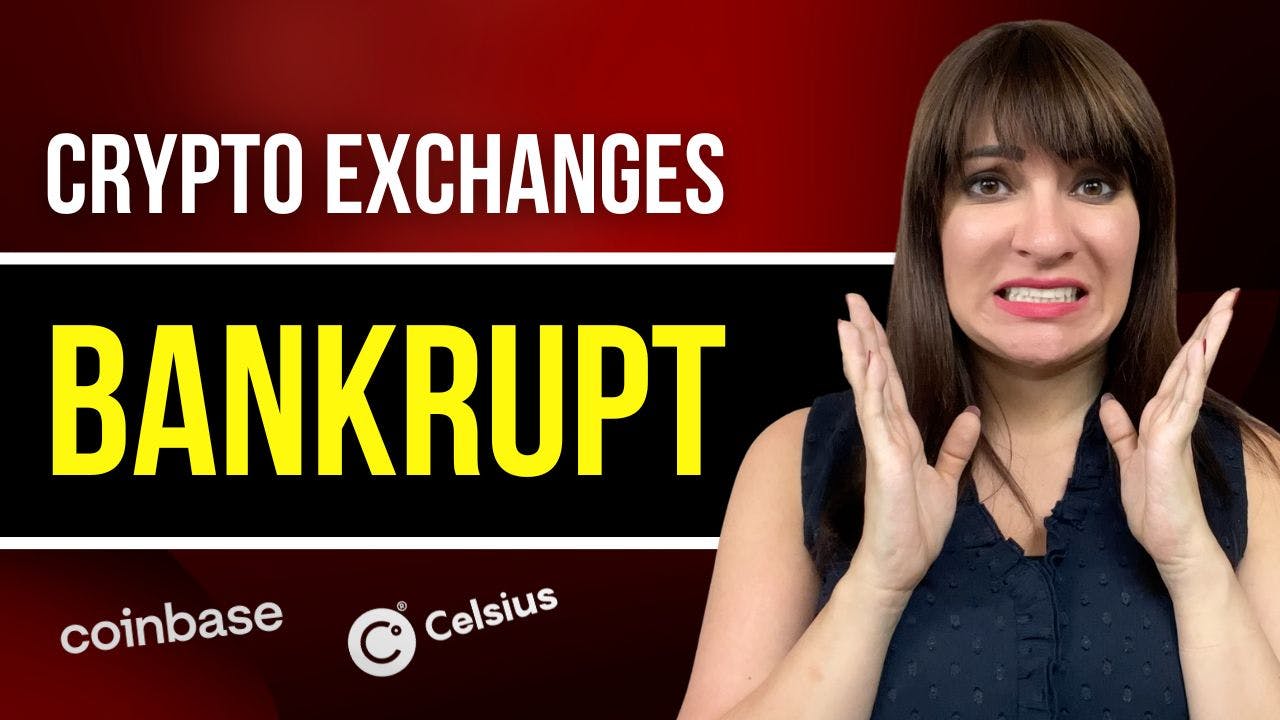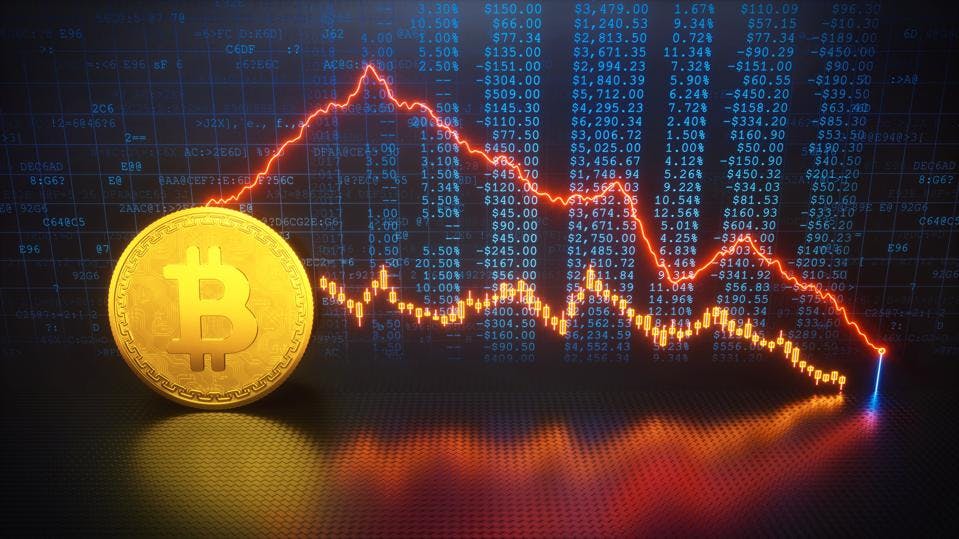Founder & CEO ROYBI Robot | UniGalax Edutainment Metaverse | NFTs & Web 3.0 Enthusiast | Forbes Technology Council
If there’s one word that describes Bitcoin and cryptocurrency, it’s volatile. Crypto prices soar and then seem to crash almost as quickly, while rumors, sentiment, and fundamental developments are quickly factored into the market. In just a four-day period in early June, Bitcoin fell from $30,500 to about $18,000 — a decline of more than 23 percent. Over the same time, Ethereum plunged more than 31 percent, and seemingly the whole crypto market has been sinking this year.
That volatility attracts traders looking to make a profit — but it’s nerve-wracking, especially for new investors looking to get started. And traders can expect plenty more of this volatility in the future as new cryptocurrencies emerge and others fall.
With cryptocurrency so extremely volatile, what should investors be doing to manage their risk?
First, let’s talk about the crypto crash and its reasons. The line has stopped going up. Cryptocurrencies’ all-time highs of 2021 now seem like a distant memory, and the crypto crash of 2022 has seen major digital assets give back the gains they achieved during their historic bull run.
So, why is crypto crashing? It’s important to remember that in this latest cycle, crypto assets are not alone. The stock market has been suffering a downturn, too, as U.S policymakers seek to tame inflation by tightening the money supply and raising interest rates.
Crypto, though, has been hit particularly hard as investors have been moving away from risky assets. And the decline in crypto prices is putting stress on institutions and other large players in the field who made investments near the top of the market.
Crypto investing has never been for the faint of heart. Digital assets are quite volatile, and such fluctuations have happened before. Though the factors driving each crypto crash are different, it can be helpful to remember a few established investing principles.
Recently, the world’s largest crypto exchange, Binance, paused Bitcoin withdrawals because of severe network congestion. Their team suggested users use BTC-BNB or BTC-ETH trading pairs to exchange their Bitcoin and withdraw until they fix the problem.
On the same day, Celsius Network, a cryptocurrency lending firm, announced to pause all withdrawals and transfers between accounts due to extreme market conditions, in the latest sign of pressure in the crypto industry. So, what does all this indicate about the intention of the exchanges? What should investors do in such a time, and should they forget about their money?
Crypto’s price moves can be affected by interest rates, inflation, and other macroeconomic factors that can affect how confident people feel about investing their money in risky alternative assets. With interest rates rising, savings accounts become more attractive, and some people may be more comfortable putting their money where they can get predictable returns.
And when prices fall rapidly as they have in the spring of 2022, that can compound the pressure on the market by forcing some investors to free up cash so they can meet other obligations.
Another factor that can drive investor pessimism and may lead to crypto crashing is government actions by regulators worldwide.
As interest in cryptocurrency has grown, public officials are evaluating what the technology might mean for monetary policy, security, and the environment.
China has been particularly aggressive. In 2021, for example, prices dropped after the Chinese government declared cryptocurrency transactions illegal and said overseas exchanges are not allowed to do business with people in China.
The drawdowns in 2022 come as the crypto market has been bracing for action from the U.S. government on multiple fronts. As monetary policymakers raise interest in an effort to slow inflation, the Biden administration has ordered federal agencies to develop detailed plans for crypto oversight.
Literally speaking, most industry experts have noted that crypto exchanges are halting their withdrawal and deposits as they are running out of liquidity. Exchanges don’t have liquid cash even to a fraction of the supposed value of cryptocurrencies, which they hold in their digital wallets on behalf of investors. As the exchanges cannot liquidate their holdings even at their depreciated values, they are trapped.
Many crypto exchanges keep some Bitcoin or Ethereum in their reserves or their cold wallets for long-term storage, and you know it’s like they keep circulating the same cryptos with new users. But whenever there is a situation like this where people want to withdraw their crypto all at once, it takes a toll on the entire matching system. Also another reason is that right now, the exchanges just have 2.4 million Bitcoins out of 19 million in circulation. So, this clearly indicates that the exchanges are running dry.
https://www.youtube.com/watch?v=f4pEKwtJvbU
Stay Calm
Whether you decide to sell your cryptocurrency or see a dip as an opportunity to buy more, you need to act with a cool head. Making emotional decisions, especially when trading, rarely results in anything good happening. So, before you rush into the market in a panic, you’ll want to reflect on why you’re trading crypto in the first place. Are you investing because you believe in the long-term opportunity? Or are you here to make a quick buck on short-term trading?
The answer to these questions can help guide you to the proper decision. In either case, you’ll want to act according to your goals. In other words, if you believe in the long-term opportunity, think with that mindset. If you’re here for a quick trade, think with that mindset.
Is there news driving the trading price of Bitcoin and other cryptos? It’s possible that there’s fundamental news that’s shifted the market’s sentiment, and it’s not just price action or rumor-driving sentiment.
In 2021, actual developments hurt prices. China’s move to ban financial institutions from providing crypto-related services was a further clampdown since the country had already banned crypto exchanges in 2017, though it hadn’t prohibited individuals from owning cryptocurrencies. Then late in 2021, the Federal Reserve decided to reduce liquidity in the financial system, and many cryptos have been on a significant downturn well into 2022.
In May 2022, the stablecoin TerraUSD dropped as traders engaged in an old-fashioned bank run, as they feared that it didn’t have the crypto assets to back its peg to the dollar. This news spilled over into other crypto markets as traders worried that selling would drive more selling.
So, these moves have been further significant blows to the market, which had been enjoying significant capital inflows.
Cryptocurrency is volatile by nature. Because crypto generates no cash flow, traders have to rely on changes in sentiment to drive the price. That means the market can swing from rapid optimism, as it did in early 2021, to pessimistic despair, as it did a few months later. The news around the Coinbase IPO in 2021 helped drive positive sentiment to crypto, while the reduction in liquidity drove pessimism at the end of 2021 and the start of 2022.
So when you have an asset that’s driven by sentiment, the emotions of traders propel the market. That’s true in the case of stocks, too, but they also may have a real stream of growing cash flows from their issuing company to accelerate them higher.
This volatility is exactly what draws professional traders, who use high-powered algorithms to make sophisticated trades, something that mom and pop traders don’t typically have the advantage of using. Traders like volatility since it gives them a chance to make money — that’s Wall Street’s game.
Analyze how the fundamental situation could play out for crypto, given new developments: Will governments get tougher on it? Will they encourage wider adoption of it? Will new regulations help rather than hinder the cryptocurrency market? What else might drive the market?
Is China’s move to ban crypto a harbinger of things to come? Maybe. India has been exercising the idea of banning cryptocurrency, while the Russian central bank has also voiced opposition to it. But other countries, including the United States, are exploring how to regulate cryptocurrency instead of prohibiting it outright. Some countries, like El Salvador and the Central African Republic, have even made it legal tender.
How other major countries proceed remains to be seen, but it’s clear that cryptocurrencies face real threats in the form of regulation, including regulation that could literally put them out of business. As crypto gains traction, it risks becoming a victim of its own success.
It doesn’t help that crypto is used as part of ransom attacks and other criminal activities.
Therefore, it’s not out of the question that the dreams of crypto are simply legislated out of existence. Of course, the political implications are but one facet of their future. Crypto faces other significant hurdles, including the financial and environmental costs of mining them.
And finally, IRS rules on taxation make crypto unwieldy as a payment system.
After you’re done cooling down and have assessed the situation and what it means for the future, you’ll want to consider how to act.
Are the risks really opportunities in disguise? If you see it that way, you may want to continue holding your position or use a dip in the price to invest more.
Are the risks likely to persist or even grow worse? If so, you may want to take your losses now and stay out of the game for the future.
Is the situation too murky? If it’s tough to see the way ahead, you may consider splitting the difference, selling some of your position today while still having potential upside tomorrow.
Cryptocurrencies are highly volatile, and many investors don’t feel comfortable putting much money in them. The good news for investors is that they have alternatives to cryptocurrency that offer attractive long-term returns:
Individual stocks. If you’re willing to do the analysis and continue tracking the company, you can make very good returns by investing in individual stocks such as Amazon or Apple.
Dividend stocks. If you’re looking for a cash payout as part of your investment, you can buy dividend stocks. These tend to be less volatile than stocks overall.
Index funds. If you don’t want to do the work of finding individual stocks but still want high returns, then a good alternative is an index fund. An index fund owns stocks or other assets and is designed to track a specific collection of stocks (such as the S&P 500).
REITs. If you’re looking for a healthy cash payout, REITs are another alternative to dividend stocks. REITs own and operate real estate and have a good long-term track record of returns. You can even buy a fund, so you don’t have to pick individual REITs.
Those are some of the highest-potential alternatives to cryptocurrency. A plunge in the cryptocurrency markets may have you feeling rattled. Use it as a wake-up call to re-assess why you’re involved in the market, to begin with. What opportunities and risks does it present?
Automatically Support Sites You Love in Real Time
Quality Weekly Reads About Technology Infiltrating Everything





